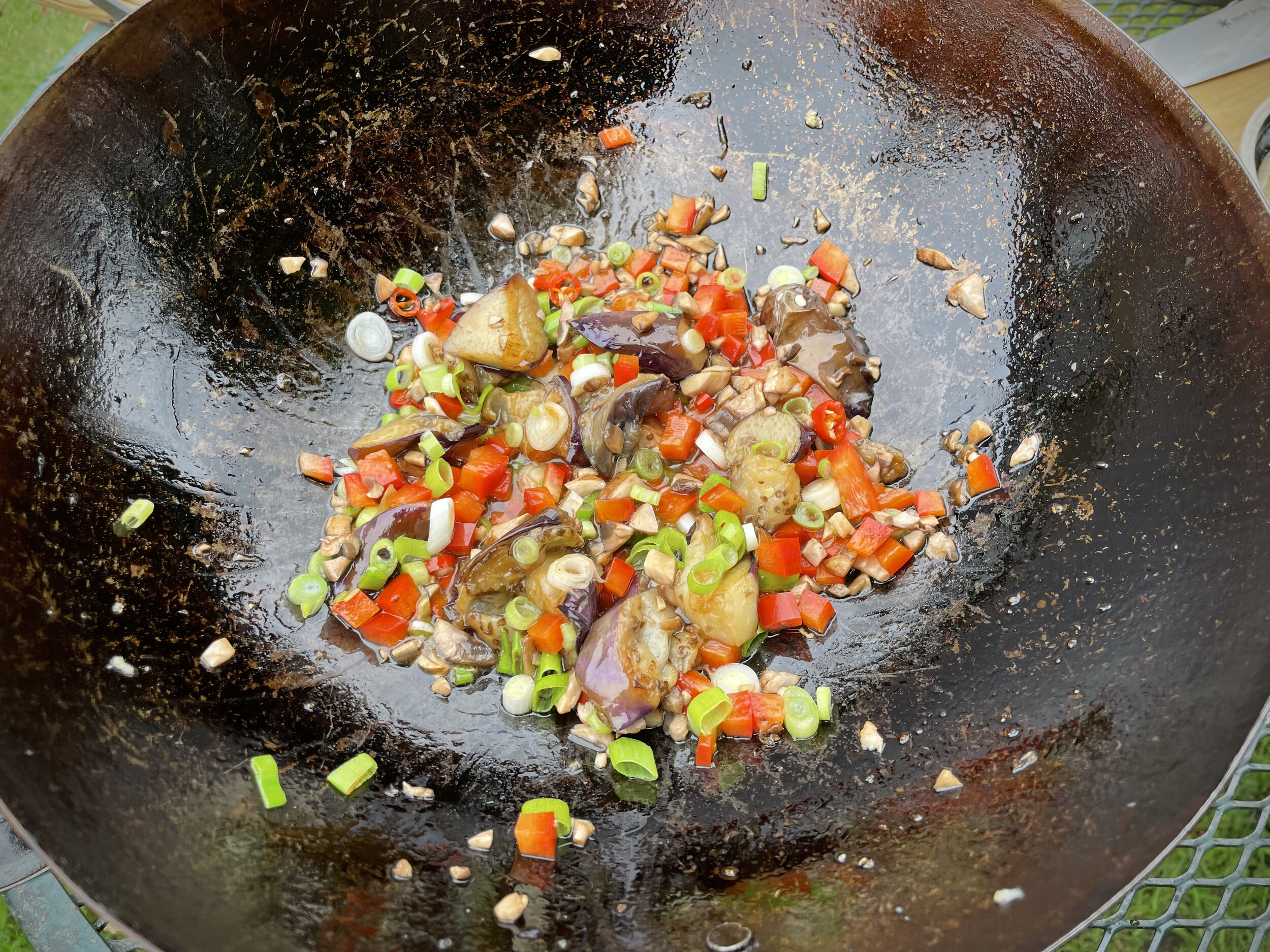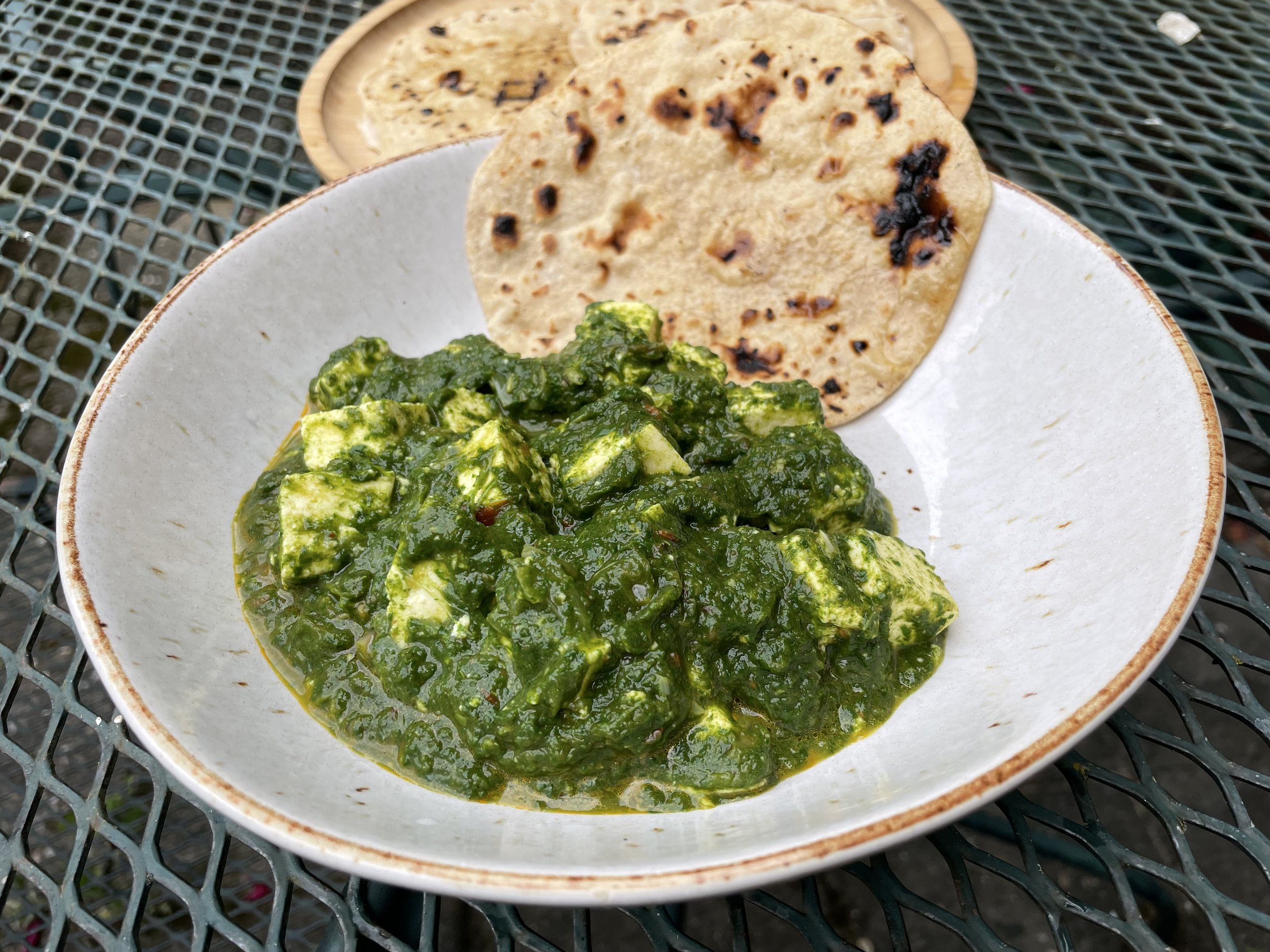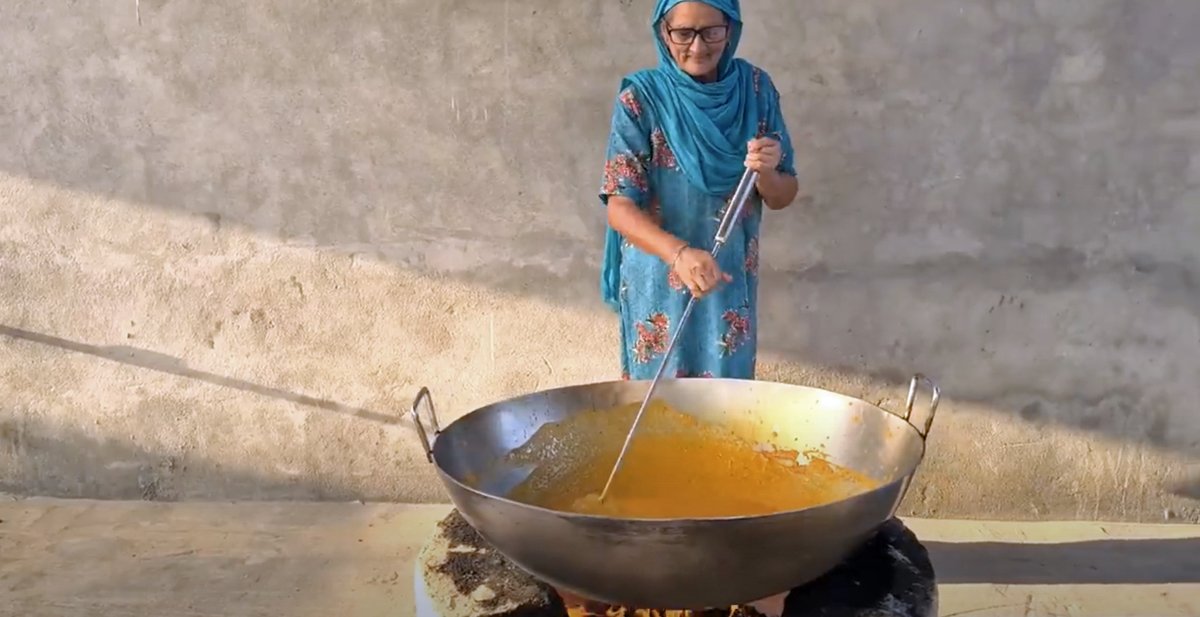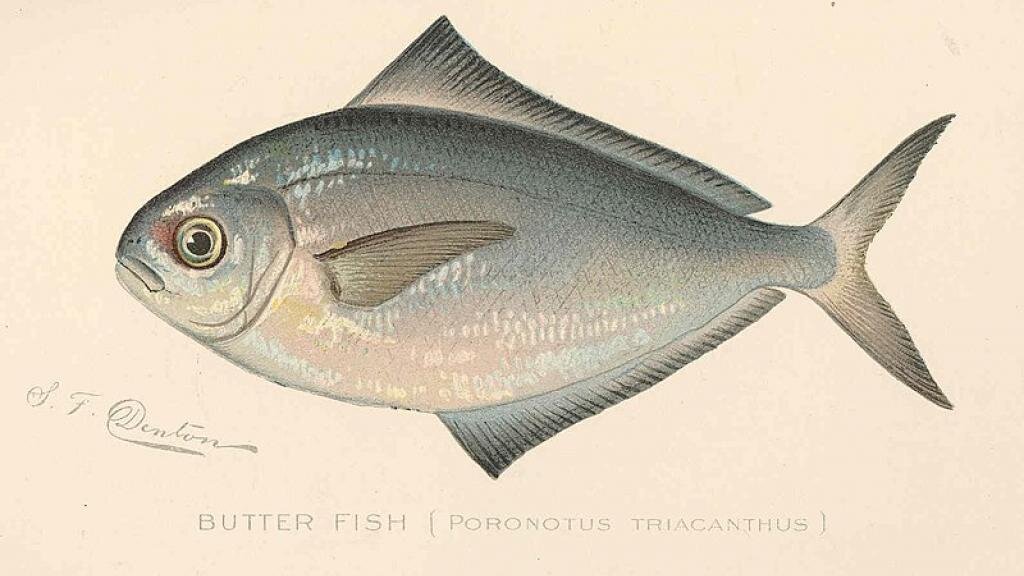Saj bread
This is an unleavened bread baked on a saj, a convex metal griddle. This can be markook shrek or an even thinner and very large bread called lavash. This bread is common in the Middle-East.
Leavened flat breads
Turkish Flat Bread (Bazlama)
300 ml warm water
12 g active dried yeast 1 packet
15 gram sugar
Combine the yeast, sugar, and water and activate the yeast for 10 minutes.
200 g Greek-style yogurt
30 ml extra virgin olive oil
Mix the yoghurt and oil.
15 g kosher salt
500 g all-purpose flour
¼ cup finely chopped flat leaf parsley
Mix the yeast-mixture, yoghurt and flour. Roll the dough portions into approximately 15 cm circles.
Khubz (Greek: pita)
The name is confusing since ‘khubz’ is the generic Arabic word for bread. A recipe from Claudia Roden’s “A New Book of Middle Eastern Food” (1968):
500 gram ‘strong’ flower. Strong flower is made from hard wheat and is high in gluten content.
300 ml water.
15 gram fresh yeast or 7 gram dried yeast
Sugar
Salt
Oil.
Bake in hot oven.
Note: when I bake this bread in my oven, the outside becomes hard. The same dough on a flat piece of cast iron on the stove results in a soft khubz.
Indian Naan (no yeast but baking soda)
1 cup all-purpose flour plain flour, Maida
1/4 tsp baking soda
1/4 tsp salt
1/4 tsp sugar
1/4 cup yogurt room temperature
1-1/2 tsp oil canola, vegetable
1/4 cup look warm water use as needed
Making Naan:
For garnishing mix all the ingredients, butter, salt, cilantro, and green chili. Set aside.
Mix the dry ingredients together, add 1 tablespoon of oil and yogurt mix it well. Then add the water gradually to make very soft dough but not sticky. Knead the dough on a lightly floured surface, knead the dough well. Apply light oil to the dough and cover. Let the dough sit for about 3 hours in warm place.
Dough should be about 1-1/2 time, knead the dough again on floured surface. Divide the dough in four parts, lightly roll into the flour, cover the balls and let it sit for about five minutes before rolling.
Roll the naan one at a time on a lightly floured surface little less than 1/4 inch thick. Sprinkle the water lightly on one side of the naan.
Put water side naan over tawa, once the naan start bubbling and dough start drying, turn the tawa over flames keeping about 2 inch away from the flames to cook the naan from top. Note: yes naan will stick to tawa and will not fall of, this the reason you cannot use the nonstick skillet.
Once naan browned to your satisfaction, remove, and spread the butter mix over.
Man’ouche Lebanese flatbread
360 g flour
150 g self-raising flour
10 g salt
5 g sugar
4.5 g dry yeast
250 ml lukewarm water
As needed: olive oil
As needed: za’atar
Mix the flour, self-raising flour, salt, and sugar well. Dissolve the yeast in the water and leave the mixture to rest for a while so that the yeast can activate. Gradually add the yeast and 1 tablespoon of olive oil to the flour mixture. Knead for ten minutes until it forms a smooth and supple dough. Cover the dough and allow to rest for one and half to two hours.
Knead the dough again and divide into eight small balls. Leave the dough to rest again for 30 minutes. Flatten the balls with your hands into thin, round pizzas. Brush with olive oil and sprinkle over the za’atar. Bake in a hot oven at 200°C or on the traditional convex pan (saj) for a few minutes until done.









![Jamaican Dutch oven made from cast aluminium. I ordered a 9,5 inch version. [ Probably due to corona they don’t ship to The Netherlands. I had to cancel my order ]](https://images.squarespace-cdn.com/content/v1/585f9adee58c620a62b8f554/1617385103252-JIMEIMGMP42KNMHLL2P1/il_1588xN.2955453283_f6fc.jpg)









































